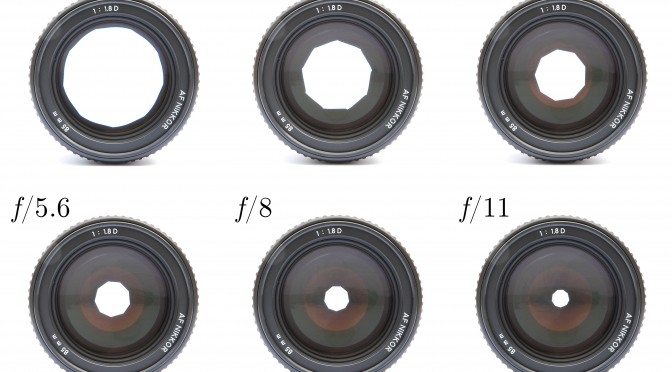Sometimes filmmakers buy fast lenses like the Canon’s “nifty fifty” 50mm f/1.8 expecting to shoot with the very wide apertures that such lenses offer. There are two reasons that you will rarely want to use these very wide, i.e. fast, apertures.
First is the challenge of focusing when you open the aperture a lot, since the wider the aperture, the narrower the depth of field. You can read more about the issues of focusing when filming in this post.
Secondly, when you open the aperture up to the maximum, you are decreasing the image quality. How much you lose out depends on the lens. Some lenses, like the Canon L series, are great even at or close to the maximum aperture. But these are expensive lenses that few of us can afford.
Most lenses have their sweet spot – i.e. the aperture that produces the best image quality – about two stops down from the maximum aperture. This is a general rule, at least, but it is of course best to test out your own lenses.
In the case of the nifty fifty, if you stay between f/4 and f/5.6, you’ll have the sweet spot. This is actually a range of apertures we use most commonly with our lenses. This gives us the sweet spot and also a depth-of-field that works for a lot of scenarios.
If you keep closing down the aperture more, you will of course make the depth-of-field very wide, which is usually not desirable in cinematic work. Plus, the image quality decreases again as you get close to the minimum aperture. If you want to play it safe, don’t go beyond f/11 (or test your lenses to know exactly).
For your reference, here is a section of the f/stops series, in one-half-stop increments:
f/1.4, f/1.7, f/2, f/2.4, f/2.8, f/3.3, f/4, f/4.8, f/5.6, f/6.7, f/8, f/9.5, f/11
To find out more about what lenses you should be looking to buy, check out this post. It also compares cinema and photography lenses.
If you don’t yet have a 50mm lens (or something close to it), we strongly recommend getting the Canon 50mm f/1.8 or similar lens. We use our 50mm prime lens the most and this Canon model is light, affordable and produces great image quality. It for sure gives you the biggest value for the money.
by KoeppiK – Eigenes Werk


ALL Canons’ expensive L series lenses are soft wide open and suffer sever focus breathing even the primes, just try to focus and see how the framing get destroyed, also there is Vignetting, and even worse edge softness.
Canon Cine Lenses are acceptable wide open somehow still doesn’t justify their price. x5 L-prime=1 cine prime.
As I can’t prove that cine is better, but I know that my canon L primes are not usable wide open, even that I spent so much money acquiring them for their artistic bokeh only.
here’s a video I found proving that.
https://player
thank you for your input and for sharing the video from Vimeo – it is a very creative and entertaining product review / comparison.